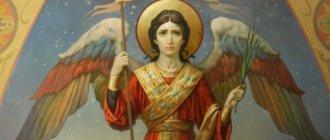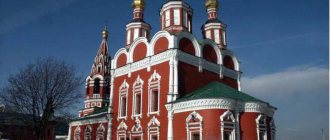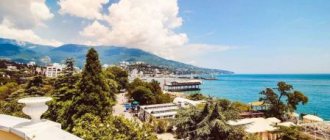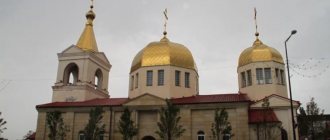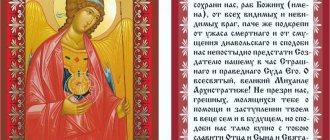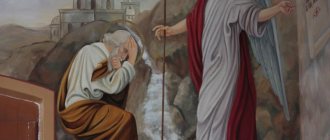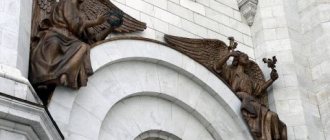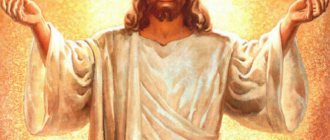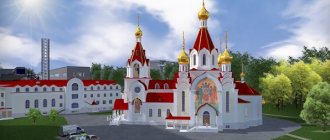"Save me, God!".
Thank you for visiting our website, before you start studying the information, please subscribe to our Orthodox community on Instagram, Lord, Save and Preserve † - https://www.instagram.com/spasi.gospodi/. The community has more than 60,000 subscribers. There are many of us like-minded people and we are growing quickly, we post prayers, sayings of saints, prayer requests, and timely post useful information about holidays and Orthodox events... Subscribe. Guardian Angel to you!
The icon of Archangel Michael is one of the most famous and revered in Christianity. Its significance is truly enormous, and its power knows no bounds. Believers have long come to her in order to find healing and receive help in everyday matters, and most importantly, to learn faith in the Lord and become closer to Him in their thoughts and deeds. This is the greatest image, which has no equal in its semantic and spiritual significance in the entire history of the formation of Orthodoxy.
Who are the archangels
Archangels have superhuman abilities and belong to one of the 9 angelic ranks. Their direct responsibility is to carry out the Lord’s instructions. The clergy puts forward theories that angels were created long before the material world. Each of them has its own personality and name. The most ancient creatures act as intermediaries between the earthly and heavenly worlds, and also convey the will of the Lord to mere mortals.
In the Orthodox world, the image of Archangel Michael is especially revered
Page 1 of 2
P.A. Tychinskaya (State Institute of Art Studies, Moscow) The image of an equestrian archangel in Byzantine and post-Byzantine art and its connection with Russian iconography “Archangel Michael - the formidable forces of the governor”
Images of an equestrian archangel, which are found, although infrequently, in Byzantine and post-Byzantine painting, influenced the appearance of the iconography “Archangel Michael - the formidable forces of the governor” in late medieval Russian icon painting (presumably, its first examples existed already in the second half of the 16th century). The problem of the emergence and development of the image of an equestrian angel in Byzantine art was discussed in detail in a special article by M. Garidis1, and S. Gabelic2 touched on the same topic in his works. However, this material was almost not compared with Russian images of the Archangel Michael - the governor. Meanwhile, images of an equestrian archangel that existed in Eastern Christian art obviously have a deep connection with later Russian monuments. The earliest and at the same time the most unusual Byzantine image of an equestrian archangel must be recognized as a fragment of ceramic tile with painting, stored in the State Historical Museum (late 10th - early 11th centuries)3. As noted by O.E. Etingof, this is a product of the Constantinople circle. It is most likely that a rare version of the Miracle scene at Khoneh was presented here. The archangel, dressed in military armor, is depicted on a rearing white horse, using a spear to stop the flow of water. On the right is a group of characters who obviously represent the pagans. The left side of the tile is missing. This unique monument is evidence of the early existence of images of an equestrian archangel in Byzantine art. In the Paleologian era, the image of an equestrian archangel is quite often included in some plots, although it is not a mandatory element. In particular, Michael on horseback is often found among the paintings of churches on the island of Crete in the Old Testament scene of the Appearance of the Archangel to Joshua and the Siege of Jericho. For the first time we find the image of an equestrian archangel in this plot in the paintings of the Church of the Archangel Michael in Arkalochori (late 13th century)4. Later, such images are found in the paintings of Archangel temples in Kakopetros in 1392, Prines in 1410 and in Kamilian in 1440.5 In the listed scenes of the siege of Jericho, Archangel Michael has all the attributes of a warrior (horse, armor, sword). He is not just a messenger who tells you what needs to be done to win; he directly realizes this victory. Moreover, the archangel appears here as a leader, he leads the people of Israel and their leader through the capture of Jericho to the acquisition of the Promised Land, a key event in Old Testament history. In the story of Joshua (as well as the Exodus from Egypt), the archangel serves as an assistant to the chosen people in the fight against the enemy. In Christian history, these Old Testament stories take on new meaning, since all Christians now become the chosen people, and they expect the same supernatural help in their struggle against those who encroach on their lands and their faith. Joshua is thought of as the ideal image of a military leader6. The scene of the appearance to Joshua became a reflection of the idea of Michael’s intercession for the chosen people, which later became so relevant in Russia in the 16th century. In addition, the path to the Promised Land is symbolically understood as the path of salvation - therefore, in the considered plot, the Archangel Michael also acts as a leader on the path to salvation. This brings Cretan frescoes closer to the famous Moscow icons of the mid-16th century. “Blessed are the hosts of the heavenly King,” embodying the same ideas, but interpreted in a new way. In the art of the Palaiologan era, an independent image of the Archangel Michael in the form of a horseman is known - this is how he is represented on the fresco located above the entrance to the church named after him in the Lesnovsky monastery7 (Macedonia). The paintings of the temple date back to around 1347. Archangel Michael in military armor riding a slowly walking white horse is depicted in a niche above the entrance from the narthex to the naos. On either side of the archangel are two saints, and on top is the composition “The Sleepless Eye,” on the left side of which there is an angel holding a four-pointed cross in his hands. The very image of the equestrian Michael here is strongly reminiscent of the images of mounted holy warriors, who in a similar way could be placed above the entrance to the church dedicated to them8. Such compositions reflect the theme of the entrance to the temple, the idea of holiness and inviolability of the temple, guarded by the holy warrior (or archangel) to whom it is dedicated. But here, in addition to this obvious theme, another is reflected - the theme of the archangel’s help to the Christian army. The image above the entrance in this case is a kind of preface to the detailed cycle of the acts of the Archangel Michael, presented in the paintings of the naos. It is interesting that in the image under consideration, the figure of the archangel has a red tint (including the face and wings), which brings it closer to some monuments, which will be discussed below. The images of the archangel on horseback, included in the symbolic composition “Tree of Jesse,” are associated with the idea of moving along the path of salvation, although here this idea sounds somewhat different. The first such image is a fragment of the composition “Tree of Jesse” in the paintings of the narthex of the Serbian Church of St. Achilleus in Arilla (1296)9. Archangel Michael (his name is distinguishable in the inscription) is depicted riding a white horse, with his right hand he points to the nearby scene of the Nativity of Christ. Above the archangel is a half-figure of a prophet with a scroll. The appearance of an equestrian angel as part of the “Tree of Jesse” goes back to an Old Testament story from the book of the prophet Zechariah10. “A man on a red horse” appears to the prophet (Zech. 1:8), then we are talking about an angel who prophesies about the fate of Jerusalem and the coming of the Messiah (Zech. 1:9–20). The book of the prophet Zechariah in the Christian tradition was considered as part of a complex of Old Testament prophecies about Jesus Christ. Particularly important in this regard is the following phrase uttered by the angel: “Behold a man—His name is Branch; He will grow from His root and build the temple of the Lord; He will also be a priest on His throne” (Zech. 6:12). So, the appearance of an equestrian angel in the composition “The Tree of Jesse” is quite understandable and is based directly on the biblical text. This angel was named Michael (over time) because of the peculiarities of the veneration of the heavenly archangel. Let us remember that when interpreting other Old Testament texts, nameless angels also often turn into the Archangel Michael (this happened, for example, with the angel from the story of Joshua). The paintings of the southern gallery of the Church of St. date back to 1315. Apostles in Thessalonica, where also in the composition “Tree of Jesse” an archangel galloping on a horse is presented above the Nativity scene11. It is interesting that the archangel, along with his wings and halo, as well as his horse, are depicted completely red. Although the horse here does not have wings, it seems as if he is rapidly flying through the sky, carrying the archangel. This image is very dynamic and differs significantly from other known images of the equestrian archangel as part of the “Tree of Jesse”. The appearance of an equestrian archangel in the paintings of the Thessalonian temple indicates the probable existence of works with Michael on horseback in the capital art of Byzantium in the Palaiologan era. No other Byzantine works of such iconography have reached us, but later monuments of Eastern Christian art provide many examples of the use of this scheme. In 1535, paintings were created in the refectory of the Great Lavra on Mount Athos12, where an expanded version of the “Tree of Jesse” is presented. Among the numerous compositions united by a branch-like ornament, an equestrian archangel is again adjacent to the Nativity scene, as in the paintings of the Church of St. Apostles. The image of an archangel on a horse as part of the Tree of Jesse is reproduced with slight variations in the external paintings of the Church of St. George in Suceava (1522–1534)13 and several Moldavian monastery churches of the 16th century: Moldovita (1537)14, Humor (1535)15, Voronets ( 1547)16, Sučevica (ca. 1600)17. Let us dwell on the image on the southern facade of the Church of the Annunciation in the Moldovica Monastery, since here the Archangel Michael is depicted entirely in red. The rider's attire combines elements of ordinary angelic clothing and conventionally transmitted armor. Of all the images of the angel in the “Tree of Jesse,” this image is closest to the Russian iconography of the archangel-voevoda, but here we can hardly talk about the direct influence of Moldavian monuments on Russian ones. In Byzantine and post-Byzantine images of the “Tree of Jesse,” the equestrian archangel points with his hand to the Nativity scene—from here we can conclude that he is prophesying the coming of the Savior to the world. Let us note that the Nativity scene was initially extremely important for the Byzantine version of the “Tree of Jesse”18. This composition is not perceived simply as a family tree of Jesus Christ or the Mother of God. This is a symbolic image designed to convey a more important idea - the idea of the organic growth of the New Testament from the Old. The figures of the prophets with scrolls and symbolic images of their prophecies, united by the branches of the “Tree of Jesse,” prove the truth of the most important ideas for Christianity about the Incarnation and the atoning sacrifice of Christ19. The Nativity scene in this composition is one of the central and main ones, since it is in it that the idea of the Incarnation is concentrated. Another, but related group of subjects with an equestrian archangel is also associated with the theme of the Nativity of Christ. In some Byzantine cycles of the Akathist 20 of the second half of the 14th century. (illustrations of Kontakion 5, which tells of the procession of the Magi to the Cave of the Nativity), and also (occasionally) in certain scenes of the Nativity, the star of Bethlehem, indicating the way to the Magi, is replaced by the image of an equestrian angel. This motif can be found in the paintings of the cathedral of the Decani monastery (c. 1350)21, the church of the Great Martyr Demetrius Markov monastery in Macedonia (1376–1381)22, then in post-Byzantine paintings - in the catholicon of the Great Meteora monastery (Transfiguration of the Lord, 1483) 23, in the Latin Chapel of the Monastery of St. John Lampadistis in Kalopanagiotis (Cyprus, late 15th century) 24 and others. The reason for the depiction of the Magi and the Archangel as horsemen, according to M. Garidis, is that in medieval society the presence of a horse was a sign of prestige and wealth25, but this explanation seems superficial. According to the researcher, the Archangel Gabriel is depicted in these scenes. However, the inscriptions on the frescoes are not visible, and there is no reason to assert that it is the evangelist Gabriel who should be represented in the image of the Star of Bethlehem. It is quite possible that there is a contamination of Michael and Gabriel here, since in the second half of the 14th century. there was already a tradition of depicting the equestrian Archangel Michael next to the Nativity scene (remember the examples of the “Tree of Jesse”). In the frescoes of the Markov Monastery (and later in the paintings of the Transfiguration Cathedral of Meteora), in addition to the equestrian angel in the Akathistus cycle, there is a separate image of the Nativity of Christ (on the vault), where the equestrian archangel is presented in an unusual perspective - he is depicted frontally and galloping directly at the viewer . His red wings are raised up, and a red cloak flutters behind his back. The earliest Russian image of an equestrian archangel (the initial of the Buslaev Psalter)26 is closely connected with the theme of the Akathist. This is a connecting link between the Balkan and Russian traditions, although its origins and reasons for its appearance are still not completely clear. At first glance, the archangel as part of the “Tree of Jesse” or the Akathist cycles is presented in a completely different role than the equestrian archangel Michael, the governor on Russian icons. In such compositions, the main function of the archangel is that he leads someone (the wise men, the shepherds, and ultimately the viewer of these frescoes and every person) to the incarnate Savior. But the archangel-voivode is not only the horseman of the Apocalypse or the protector of Christians from enemies. Let us remember another equally important aspect of the veneration of the archangel, which is reflected in this complex iconography. Michael is also called upon to lead a person to God, to convert him to faith, i.e. he assumes the functions of an apostle. This was reflected in many legends associated with Archangel Michael. In addition, almost all icons of the archangel-voivode depict the Savior Emmanuel with a throne in one of the upper corners. So, in the overwhelming majority of cases, Archangel Michael the Voivode leads the person praying to the image of Christ - just as the angel horseman in the compositions discussed above leads a person to the incarnate Savior. In the post-Byzantine era, most of the listed motifs continue to exist, but new subjects also appear. For example, in the narthex of the Church of the Holy Cross in the village of Patreuti near Suceava (Romania), the equestrian Archangel Michael, together with the Equal-to-the-Apostles Emperor Constantine, is presented at the head of a group of holy warriors. The mural painting is almost simultaneous with the construction of the church and dates back to the last quarter of the 15th century.27 The temple was erected by the Moldavian ruler Stephen III the Great, who was famous for his military campaigns against the Turks, to which he attached not only purely defensive significance. Stephen the Great dreamed of defeating the Ottoman Empire in alliance with other Christian states and thus spreading the Orthodox faith everywhere. His hopes, which turned out to be unrealistic in life, were embodied in the composition that interests us. According to A. Grabar, the scene of the procession of the holy warriors and Constantine the Great, led by the Archangel Michael, is the plot of Stephen’s “crusade” against the Turks retold in sacred iconographic language28. The image is located on the western wall of the church's narthex, above the only entrance door. In the upper right corner of the composition there is a large eight-pointed cross in the celestial segment. Archangel Michael (an inscription with his name has been preserved) on a white wingless horse turns to Emperor Constantine following him, pointing him to the sign of the cross in the sky. Following Constantine at some distance are two more horsemen (according to A. Grabar, George and Dimitri), one of whom holds a banner. Following is a group of nine horsemen (all of them in military attire and with halos). The Archangel is also dressed in armor, his wings spread upward. A similar composition is found among the paintings on the southern façade of the Church of Constantine and Helena in Ohrid, created shortly before the Petrauc paintings (c. mid-15th century)29. The preservation of the frescoes does not allow us to see the Archangel Michael, but, according to some assumptions, he was originally depicted there30. Such compositions go back to the images of the vision of the cross in the sky, which was revealed to Constantine. The considered plot, despite its isolation and originality in relation to the monuments listed above, again allows us to talk about the archangel as a character who acts as a leader on the path to salvation, the symbol of which in this case is the cross. In addition, the idea of spreading the Christian faith, already outlined above, is present here. All these meanings would later (in the middle of the 16th century) resound with renewed vigor in the Russian icons “Blessed is the Host,” where the archangel will be represented flying on a winged horse at the head of a large army. The considered Byzantine and post-Byzantine compositions with an equestrian archangel for the most part do not have a direct continuation in Russian art, with the exception of the last image with a cavalcade of holy warriors. However, Byzantine images of an equestrian angel have many similarities with Russian images of the Archangel Michael - the formidable forces of a governor. In all cases the archangel appears as a horseman, who marches victoriously at the head of a group of characters or implied worshipers. The Archangel points to the Star of Bethlehem (scenes of Akathist, Nativity), to the incarnate Christ (compositions of the Tree of Jesse), to the saving cross (Patraeuti). In all these compositions, the archangel is invariably the leader on the path to salvation, to Heavenly Jerusalem, to Christ. At the same time, Michael appears as the leader of the chosen people and their ruler in military battles, which ultimately must serve to spread the true faith. The described tradition is characteristic specifically of Orthodox art; Western examples of the iconography of an archangel on a horse are extremely rare. There are connecting links between Byzantine and post-Byzantine works and the Russian iconography of the Archangel Michael the Voivode: the initial of the Buslaev Psalter, the Russian icons “Blessed is the host of the heavenly King,” the Great Banner of 1560. These central works of their era reflect the ideas that turned out to be the most significant at that time. It is noteworthy that all these ideas were expressed to one degree or another in almost all of the listed images of the archangel on a horse. So, the image of the Archangel Michael - the formidable forces of the governor, which appears in Russian art around the middle - second half of the 16th century, is not only externally, but also in meaning close to the considered Byzantine and post-Byzantine images of the archangel-horseman. It is an interesting example of a rethinking of an earlier tradition in the late Middle Ages. At the same time, on Russian soil, new meanings are not so much invented as the potential that has long been present in this tradition is revealed.
- Forward
Description and meaning of the icon of Archangel Michael
Icons depicting saints differ in their subject matter. However, the figure of Michael always contains several required attributes:
- Angels are ethereal beings, but they are depicted in human form for ease of perception. Their holiness is symbolized by white wings folded behind their backs and a halo above their heads;
- Archangel Michael is depicted in a robe of blue, white, and sometimes gold;
- behind his back is a red cloak, and in his hands is a staff or a fiery sword;
- the saint's hair is decorated with a toroka, which symbolizes obedience to the Almighty;
- Sometimes icons depict a mirror, denoting the gift of prediction.
In the Orthodox world, the icon of Archangel Michael is revered with special power, since he leads the invincible heavenly army. He stood up to Satan when he rebelled in Heaven, and continues to fight evil in the human world. The Archangel patronizes warriors who defend a just cause, fight for their home, family and eradicate evil spirits. In the Holy Scriptures, Archangel Michael is to be one of the commanders-in-chief of the holy army in the final battle of Good and Evil.
The mirror symbolizes the gift of prediction
The archangel's robe comes in blue, white or gold shades
The saint's hair is decorated with toroka
Images of the saint
| Name | Description |
| Archangel Michael (from Deesis) | In addition to full-length drawings, there are also half-length options. |
| Ceremonial Archangel Michael | The Archangel, dressed in the clothes of Byzantine courtiers, is depicted as the guardian of the Lord. In his hands he holds a symbol of power - a “measurement” (rod). Some icon painters draw a labarum (handle with a panel) in his hand - an imperial military standard. He can be depicted in ceremonial robes: dalmatic and laura, embroidered with diamonds and gold boots. |
| Blessed Michael | The image of a saint in battle armor. This version of the painting appeared in the iconography "The Appearance of the Divine Michael to Joshua." |
| Michael pierces the evil one with his spear. | |
| The saint tramples a wealthy old man under his foot (trying to strangle him). The painting can be found in Balkan frescoes and icons. | |
| Blessed Michael Voevoda | The saint is depicted flying on a winged red stallion. Eschatological scene. The fiery creature, heralding the end of the era, trumpets. In one hand it victoriously holds the Gospel, and in the other - an eight-pointed cross and a spear, with which it plunges the devil into Gehenna. Collapsing earthly states are depicted under the hooves of a winged horse. A rainbow shimmers with all colors between his hands. At the top of the picture, the Savior Emmanuel is visible in the heavens in front of the throne on high. |
| Miracle of Divine Michael in Khoneh | The saint thrusts a spear into the snake. On the right you can see a tower with an old man. |
| The Miracle of Flora and Laurel | Mikhail stands on the top of the mountain. To the right and left of him are painted Florus and Laurus, and horses are grazing below. |
| Worship of the Cross | A rare icon. |
| Three young men in a fiery furnace | A rare painting of an angel in icon painting. |
| Cathedral of the divine Michael (and other heavenly ethereal forces) | A rarely seen image. |
In fact, the image of Michael is found in those scenes where the heavenly hosts serve Christ. Thus, in the version “The Service of Blessed Basil the Great” the archangels stand before the saint with covered hands and in deacon’s robes. The Archangel is depicted on the icons “Temple of the Archangels”, “Cathedral of St. Michael”. It can be found in compositions where angelic forces are written, for example, “The Cathedral of the Virgin Mary,” “Rejoices in You,” “The Queen Presents at Your Right Hand,” “The Last Judgment.”
The miraculous power of the holy face
History knows many miraculous acts of Archangel Michael. The first mention of them appeared in a legend about a resident of the city of Colossi. He was able to heal his daughter with water from a miraculous spring, after which he erected a temple and dedicated it to St. Michael.
Then the story moves to Archippus of Khirotopsky, who served in this temple for more than 60 years. The pagans became angry with the righteous man and decided to destroy the holy place. They connected 2 small rivers and directed the water flow to the temple. The sexton began to frantically pray to Archangel Michael. The saint heard Archippus’ appeal and pointed his staff at the mountain, in the place of which a crevice formed. The water rushed into it, but the temple remained untouched.
During the period of the plague that raged in Italy (590), the Pope held a solemn prayer service. After offering prayers, the image of St. Michael appeared above the roof of the mausoleum, and the plague soon ceased. The building was renamed Castel Sant'Angelo.
History knows many miraculous acts of Archangel Michael
Miracles of the Heavenly Warlord
- The veneration of archangels lies not only in the Bible, but also in miracles, the memory of which has been preserved since ancient times. Byzantine kings even depicted them on coins (where only kings were usually present).
- In the 6th century. Rome was overcome by plague. During the religious procession, Pope Gregory saw Archangel Michael sheathing his sword. The epidemic has since subsided. Now the top of Hadrian's mausoleum is decorated with a statue of the Archangel (now it is the Castel Sant'Angelo).
- Veliky Novgorod was not taken by the Tatars under the leadership of Khan Batu thanks to the intercession of the Mother of God and Archangel Michael. This event is attested in the chronicles of the 16th century.
- Saints Laurus and Florus were taught the art of horsemanship by their heavenly patron.
- Several Athonite monasteries keep their own legends about how the Archangel Michael saved monks from illness and attacks from robbers.
Where to place the icon in the house
The location of the icon depends on its size, since there are no specific prohibitions in Orthodoxy for the location of the holy image. The main criterion is a person’s motivation to read the prayer. You need to choose an icon by listening to your inner voice. He will tell you which of them the person has a soul for. Most often, the face of Archangel Michael is placed on the iconostasis, the main thing is that the icon of the Savior is in the center. A lamp is placed in front of the holy image, into which church oil is poured and lit during prayer.
Russian fleet and horses
From the military history of Russia it is known that the ship “Archangel Michael” is one of the first linear brigantines with 52 cannons on board (launched in 1713). Its name contained a petition to the saint for special protection for the young Russian military fleet. The ship was built at the shipyards of Arkhangelsk, also named after Mikhail. It should be noted that those who have construction professions and are engaged in construction can also turn to this saint. After all, he is also considered their heavenly patron.
Once upon a time, Saint Michael taught the martyrs Laurus and Florus how to control horses. Therefore, he is the heavenly patron of horse breeders, jockeys, grooms and everyone involved in the breeding of these beautiful animals.
How to pray correctly
The main rule of any prayer is purity of heart and thoughts. Otherwise, the appeal to the holy image will remain unanswered. If a person asks not for protection and patronage, but for harm to his enemies, then the Archangel can punish him for sinful thoughts.
In Orthodoxy, there are 2 days when they celebrate the saint's day. It is on these dates (November 6, 8) that men and women are advised to ask for help from Archangel Michael. However, in the families of military personnel who are patronized by the saint, the icon is venerated at any time.
Prayers are offered to her at any hour, since you can ask for protection not only on canonically established days.
Saint Gabriel
What is the divine Gabriel like? This is one of the seven archangels and one of the three main angels in Orthodoxy. He, along with Michael, is revered in Orthodoxy, Islam, and the Jewish religion. The name Gabriel, when translated from Hebrew, means “God is my strength.” In Russia, this name is interpreted as “Fortress, Power of the Lord.”
In the Holy Scriptures, Blessed Gabriel is mentioned as the Messenger and God's messenger to people for the salvation of mankind. He also plays the role of a petitioner before the Lord for the salvation of Christian souls. In addition, Gabriel is called the angel of wisdom, good news, and mercy. It is he who tells the good news to the Virgin Mary about the birth of Jesus. It is also known that Gabriel taught Moses in the desert, told him the revelations of the Lord, revealed the secrets of Genesis, and appeared in a dream to the righteous Anna and Joachim, and to Joseph the Betrothed.
From mouth to mouth, people pass on an ancient legend, according to which Gabriel guides the soul of a baby from paradise to the mother’s womb and enlightens him before birth. In paintings, Saint Gabriel can be seen dressed in expensive clothes, with a white lily in his hand, which he gave to the Virgin Mary on the Day of the Annunciation, with a crown on his head.
Prayer to the icon of Archangel Michael
O Lord Great God, King Without Beginning, send, O Lord, Thy Archangel Michael to the aid of Thy servant (name), take me away from my enemies, visible and invisible! O Lord Archangel Michael, pour out myrrh of moisture on your servant (name). O Lord Michael the Archangel, destroyer of demons! Forbid all enemies who fight against me, make them like sheep and crush them like dust before the wind. O great Lord Michael the Archangel, six-winged first prince and commander of the weightless powers, Cherub and Seraphim! O God-pleasing Archangel Michael! Be my help in everything: in insults, in sorrows, in sorrows, in deserts, at crossroads, on rivers and seas a quiet refuge! Deliver, Michael Archangel, from all the charms of the devil, when you hear me, your sinful servant (name), praying to you and calling on your holy name, hasten to my help, and hear my prayer, O Great Archangel Michael! Lead all those who oppose me with the power of the honorable life-giving cross of the Lord, with the prayers of the Most Holy Theotokos and the Holy Apostles, and St. Nicholas the Wonderworker, St. Andrew the Fool and the Holy Prophet of God Elijah, and the Holy Great Martyr Nikita and Eustathius, the Reverend Father of all Saints and Martyr and all the holy heavenly powers. Amen. Oh, Great Archangel Michael, help me, your sinful servant (name), deliver me from the coward, the flood, the fire, the sword and the flattering enemy, from the storm, from the invasion and from the evil one. Deliver me, your servant (name), great Archangel Michael, always, now and ever, and forever and ever. Amen.
The main heavenly commander, who stands up for those fighting for a just cause, became famous for his miraculous deeds. People come to the icon of the Archangel Michael, striving to know faith in the Lord, to draw closer to him in thoughts and deeds.
If you find an error, please select a piece of text and press Ctrl+Enter.
Cost of drawing
If the icon of St. Michael the Archangel helped any of the parishioners, they decide to thank Michael. Many people have a strong desire to order a painting with his image. But for a long time people cannot understand - what icon should they order? It seems that the painting “Cathedral of the Ethereal Host” is good, and the drawing “Saint Michael - the stern heavenly army commander” is not bad.
How much do the icons of Archangel Michael cost? The price, it should be noted, is completely different. Icon painters say that if one character is painted, the price is low, but if there are many, the price will be increased. Of course, the iconography of the archangels costs a lot of money. That is, an icon can be bought for 2,000 rubles, or for 10 or more (and much more) thousand dollars. Well, ancient images are truly priceless.
It seems that we have figured out why people are attracted to the icon of Michael the Archangel. What does she protect them from? They pray before the saint, depicted on horseback, trampling the ancient serpent with a spear, as before the chosen one of the highest rulers on Earth. After all, Michael is the messenger of irresistible forces, the defender of humanity and the conqueror of the devil.
Before his magic, which he performed according to the will of the Lord, before his formidable statue, the soul trembles. The tongue becomes numb if you want to beg from him for something insignificant, material benefits, something less than the salvation of the fatherland and your life, the repose of dear departed relatives and the salvation of your own soul.
